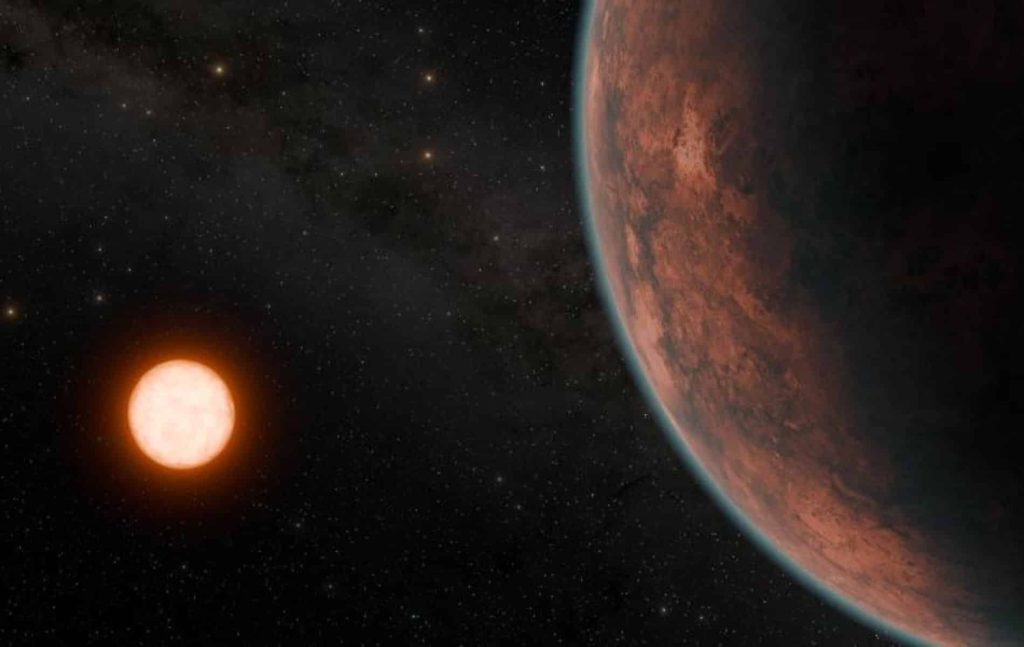The planet’s surface temperature is only 42 degrees Celsius, which is roughly the same distance away as the famous TRAPPIST-1 system.
For years, astronomers have scoured the universe looking for planets that could support life or at least be habitable, in hopes of finding Earth-like worlds. The new discovery has now caused great excitement. About 40 light-years away, researchers encountered the promising planet Gliese 12 b. Could this be the planet we’ve been searching for for so long?
Gliss 12 b
The potentially habitable planet Gliese 12 b orbits its parent star every 12.8 days. In terms of size, the exoplanet is similar to Venus, which means it is slightly smaller than Earth. In addition, this Earth-like planet also has an Earth-like temperature. For example, the surface temperature is estimated at 42°C. This makes it slightly warmer than Earth, but significantly cooler than most of the roughly 5,000 exoplanets discovered so far. The discovery of “exo-Venus” was published today in the journal Monthly Notices of the Royal Astronomical Society.
Exo Venus
The researchers tracked down the promising planet with the help of the planet hunter TESS, which has already discovered several exoplanets. And the researchers are excited. “We have discovered the closest Earth-sized temperate world so far,” confirms researcher Masayuki Kuzuhara. “Although we don’t yet know if Gliese 12 b has an atmosphere, we consider it an ‘exo-Venus.’ It is a similar size and receives a similar amount of energy from its star as our neighboring planet in our solar system.”
Atmosphere
However, to ensure that a planet is habitable, it is important to determine whether or not there is an atmosphere. It is possible that the planet has an atmosphere similar to Earth’s. However, it could also be more similar to Venus, where a widespread greenhouse effect has caused surface temperatures to reach 400 degrees Celsius. Another possibility is that the planet has no atmosphere. Or perhaps it contains a type of atmosphere not seen in our solar system. Getting an answer to this question is very important because it will tell us whether Gliese 12 b can maintain suitable temperatures for liquid water – and perhaps life – on its surface.
motherstar
To find out, the parent star is also relevant. Gliese 12 b’s parent star is a cool red dwarf star called Gliese 12, which is located about 40 light-years from Earth, in the constellation Pisces. The size of the star is about 27% of the size of our sun, and its surface temperature is about 60% of our sun. However, red dwarf stars are known to be “flying” stars, which are often magnetically active. This results in frequent, powerful explosions, stripping the potentially orbiting planet of its atmosphere. However, Gliese 12 b seems to perform better. Analyzes have shown that Gliese 12 shows no signs of such extreme behavior. This raises hopes that Gliese 12 b’s possible atmosphere is still intact.
Surface temperature
In addition, the distance between Gliese 12 and the newly discovered planet is only 7 percent of the distance between Earth and the Sun. As a result, Gliese 12 b receives 1.6 times more energy from its star than Earth receives from the Sun, and about 85% of the amount received by Venus. This difference in the amount of solar radiation the planet receives is of great importance because it indicates that surface temperatures are strongly affected by weather conditions. For imaging, the estimated surface temperature of Gliese 12 b is 42°C, while the average surface temperature of the Earth is 15°C. “Atmospheres trap heat, and can significantly affect the actual surface temperature, depending on their composition,” explains researcher Shishir Dholakia.
Earth and Venus
Research on Gliese 12 b is not just about the habitability of the planet. It also helps us learn more about why Earth and Venus, so similar in many ways, took such different paths. “Since Gliese 12 b receives a similar amount of light that Earth and Venus receive from the Sun, it can also help us explain and understand the difference between these two planets in our solar system,” Dholakia said. This could provide valuable insights into atmospheric processes that affect the habitability of planets. While Earth is habitable, Venus is not, mainly due to the complete loss of water. “Gliese 12 b, which has a temperature between Earth and Venus, could help us understand how planets become habitable, especially by looking at their atmosphere,” says co-author Larissa Palethorpe.
The search for the promising exoplanet Venus continues unabated. Because the idea that this planet might be habitable excites the imagination of many astronomers. Gliese 12 b is certainly not the first Earth-like exoplanet to be discovered, but according to NASA, there are only a few such worlds worthy of further investigation. The next step is to point the powerful James Webb Space Telescope at Gliese 12 b. Ultimately, researchers hope to know whether this planet has an atmosphere or not. “Gliese 12 b represents one of the best targets for studying whether Earth-like planets orbiting cool stars can maintain their atmospheres,” says Dholakia. “This is a crucial step in advancing our understanding of the habitability of planets in our galaxy.”

“Coffee buff. Twitter fanatic. Tv practitioner. Social media advocate. Pop culture ninja.”








More Stories
“Ask at least one question in return.”
According to research, people with this sleep rhythm live longer.
13 municipalities in the province of Seville have mosquitoes carrying the Nile virus